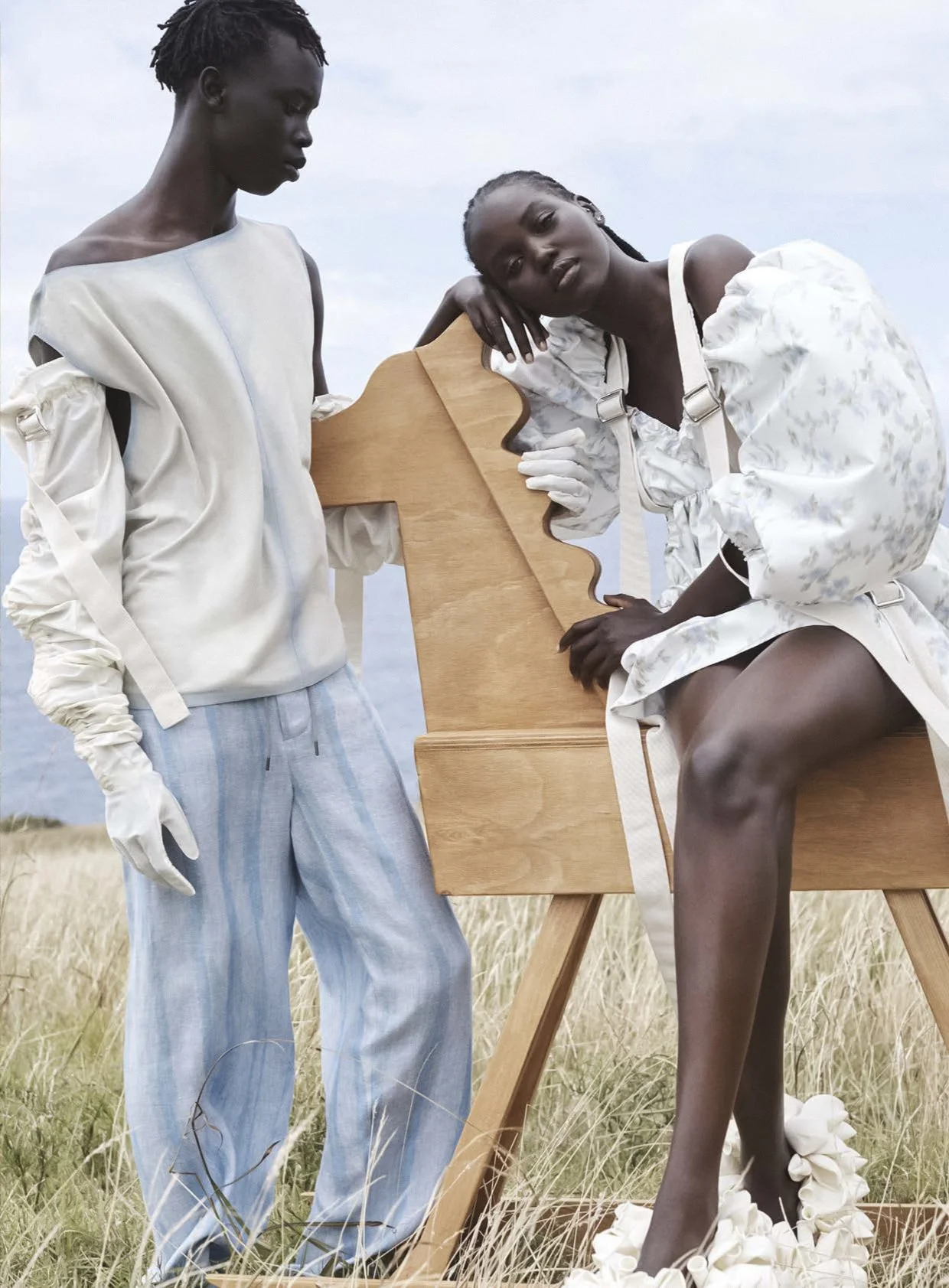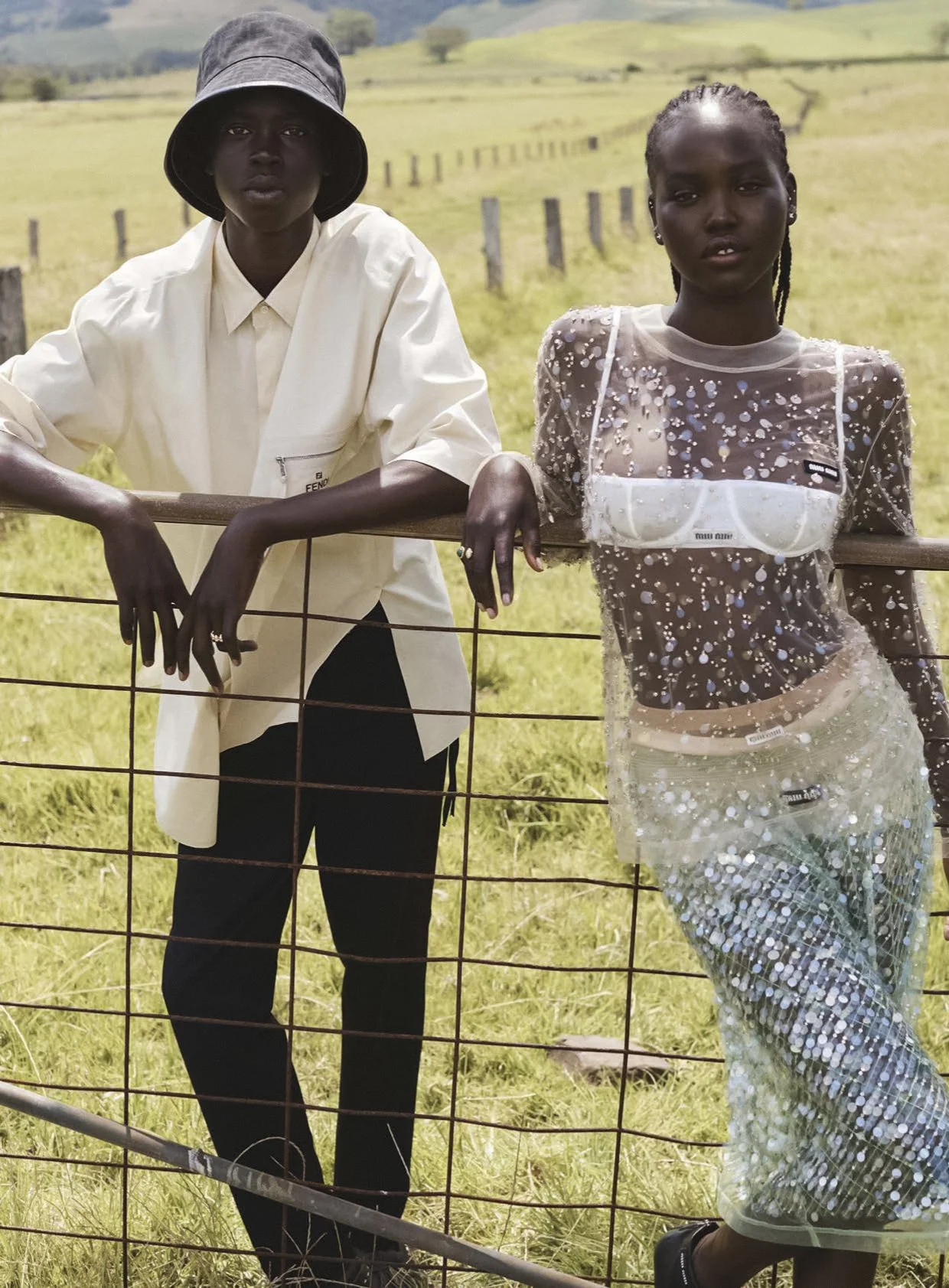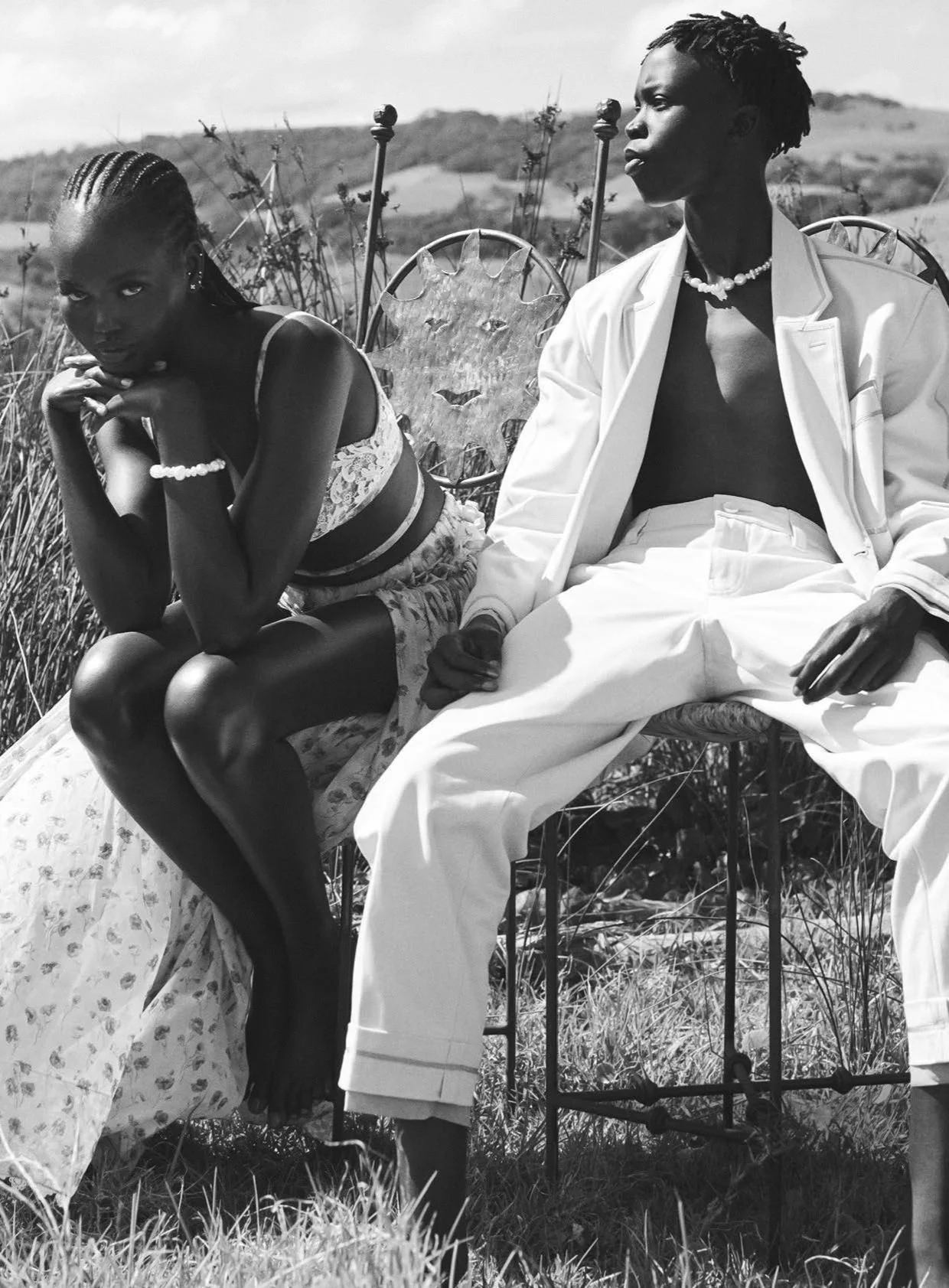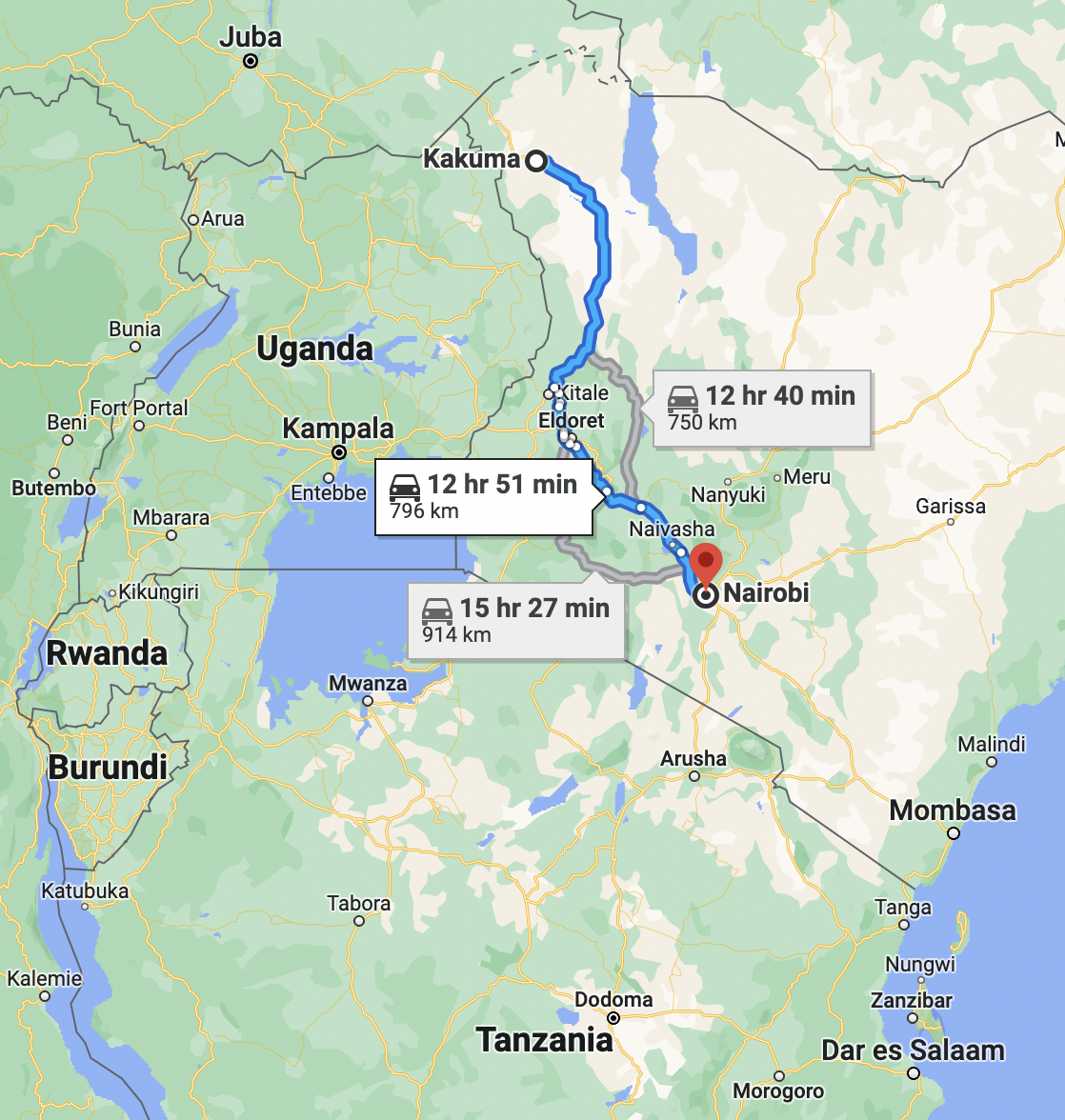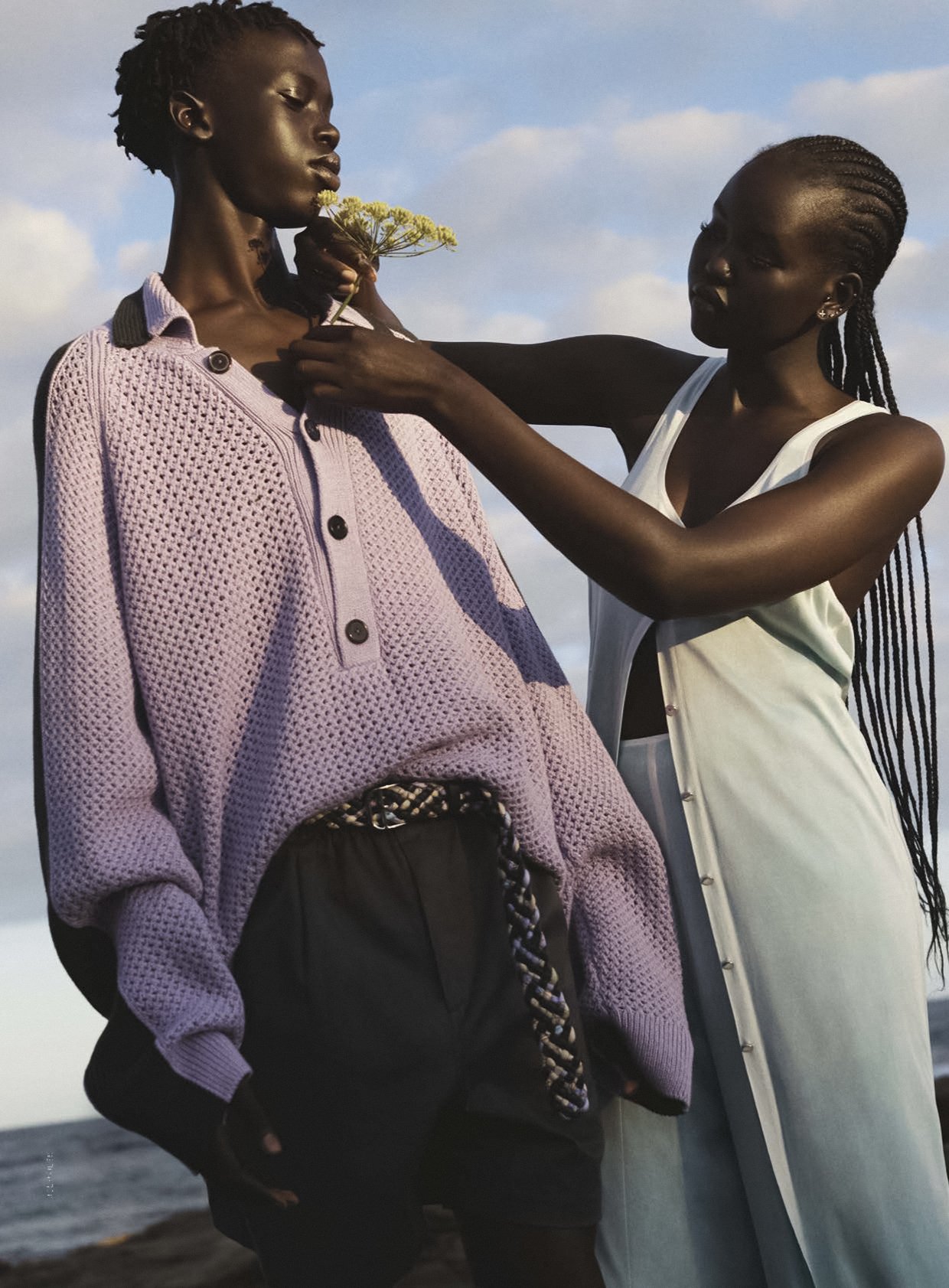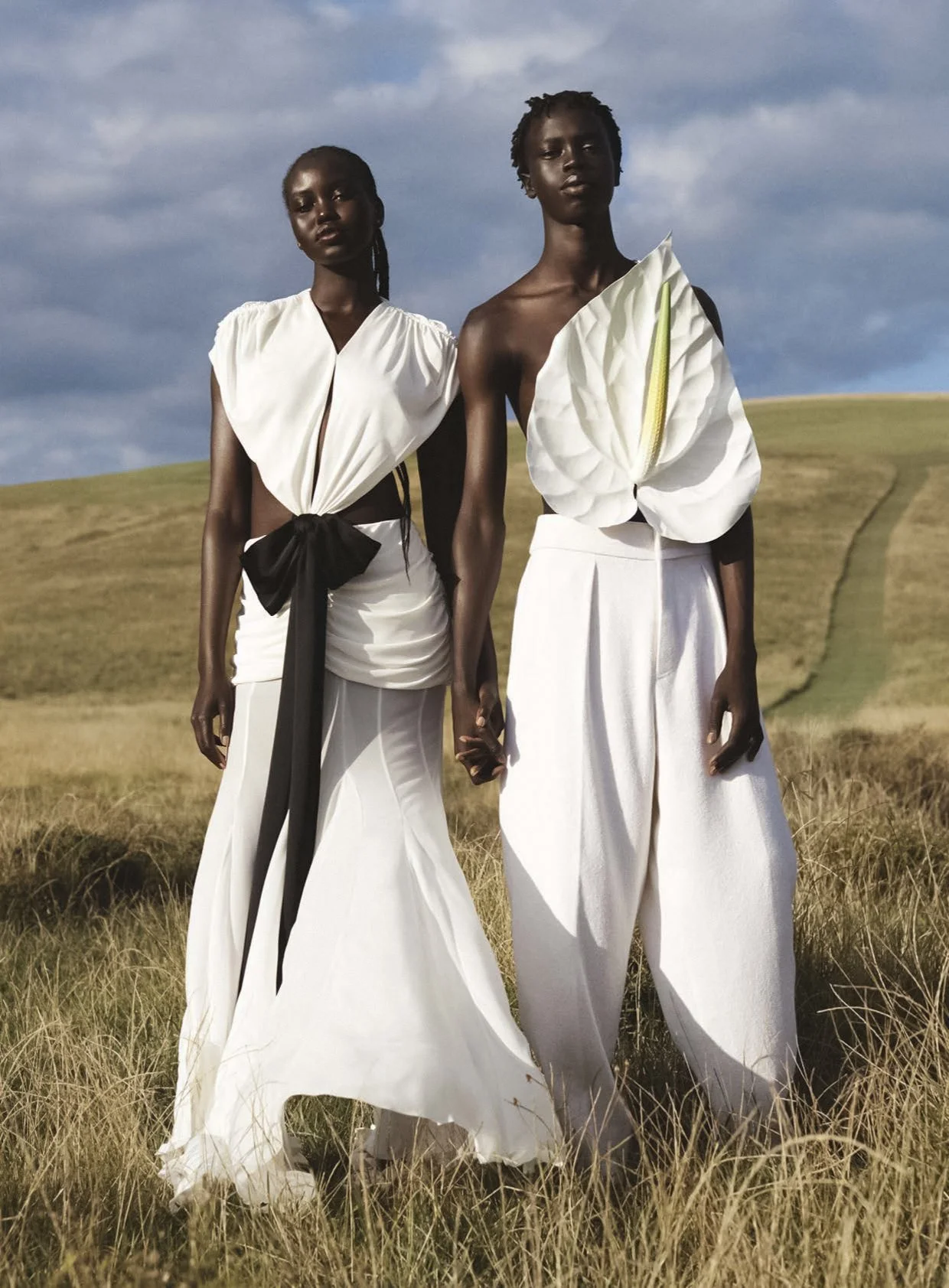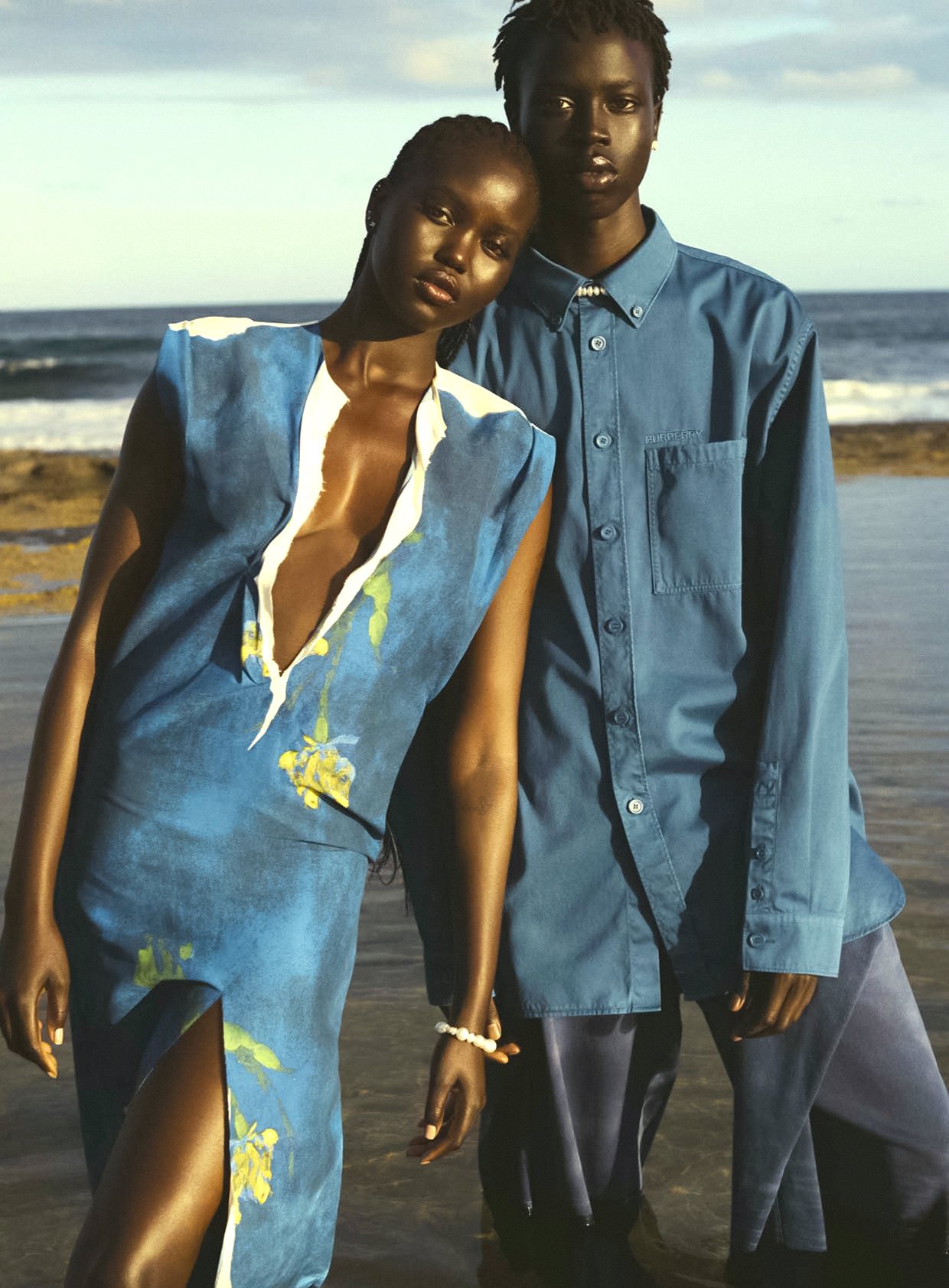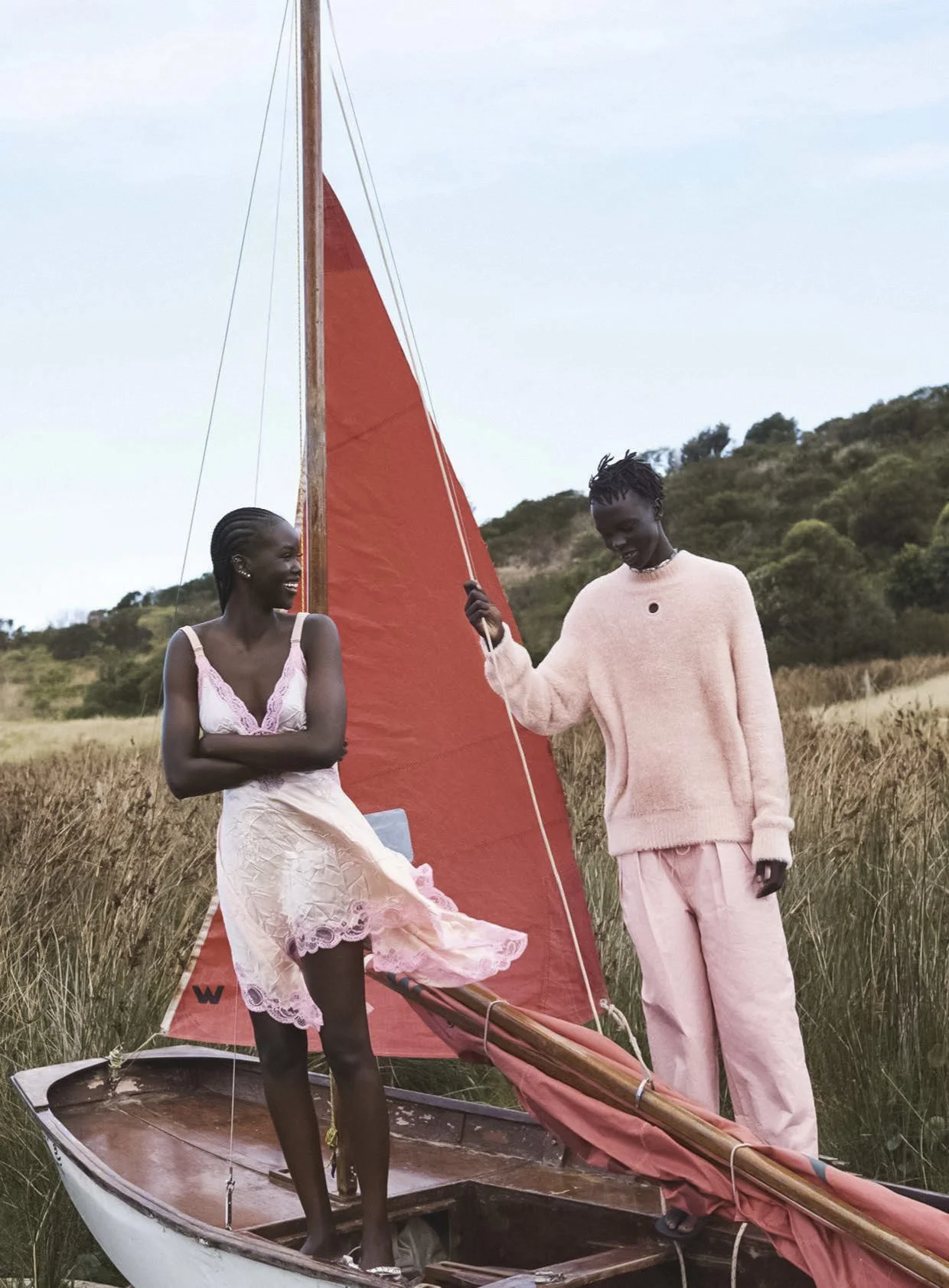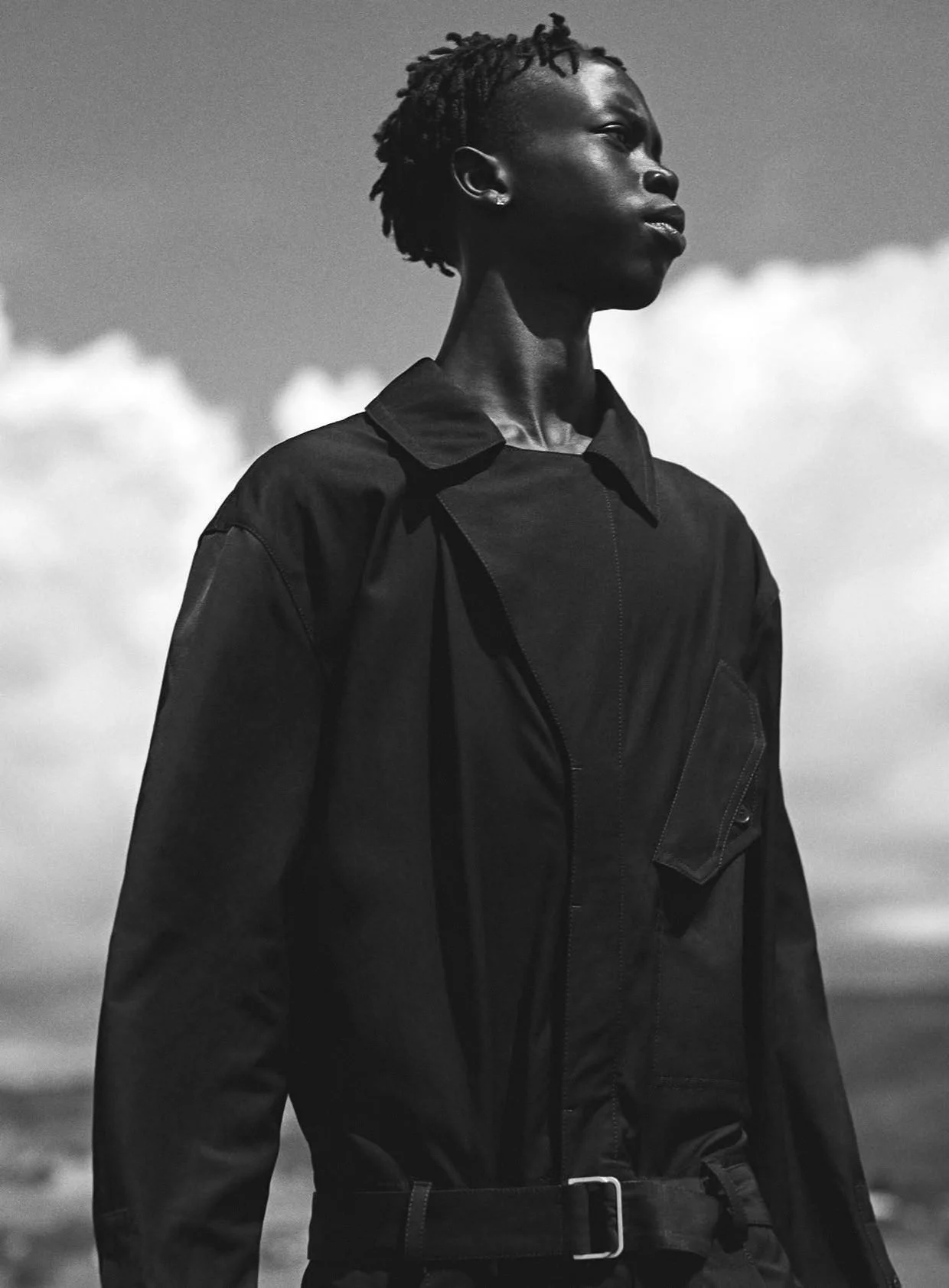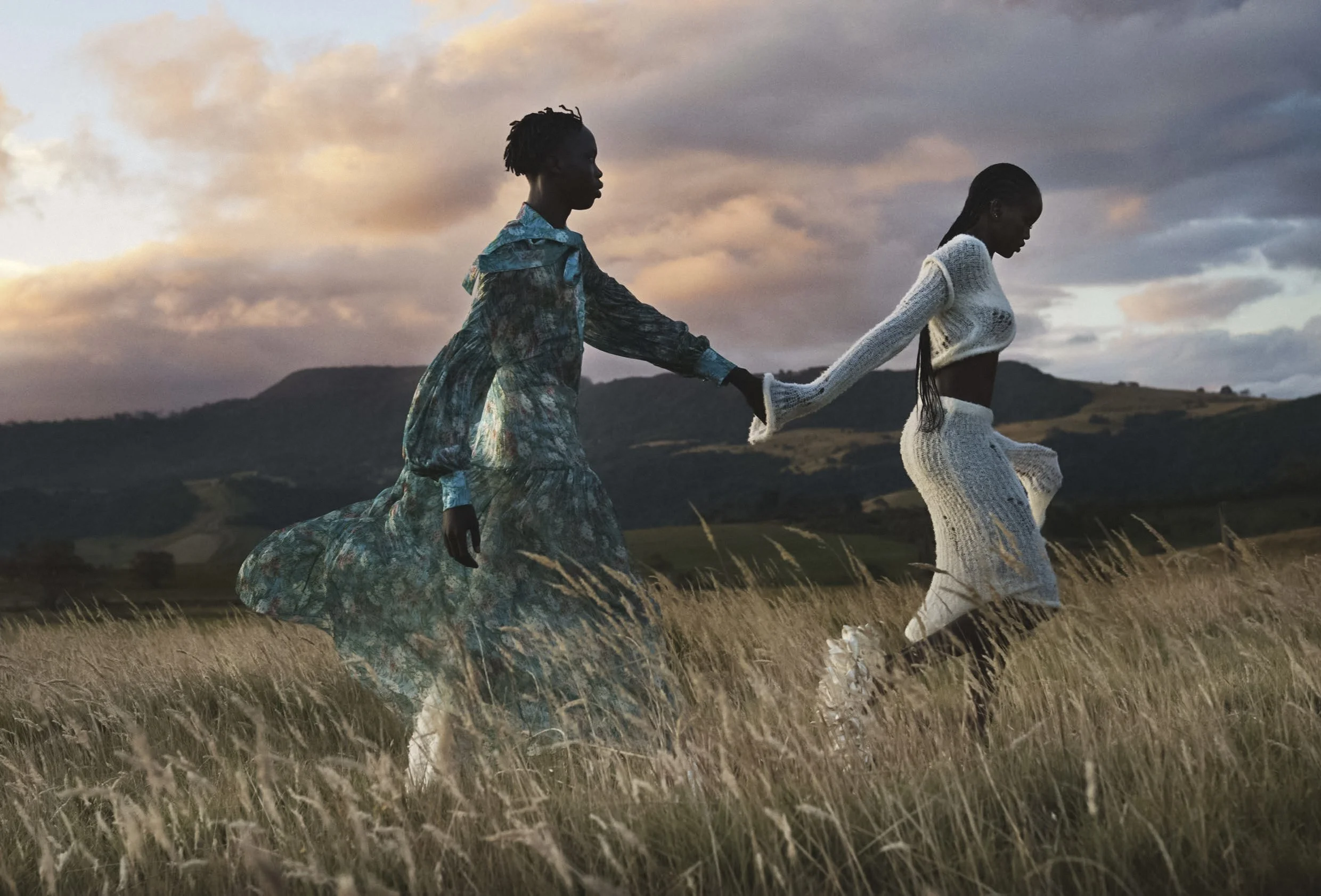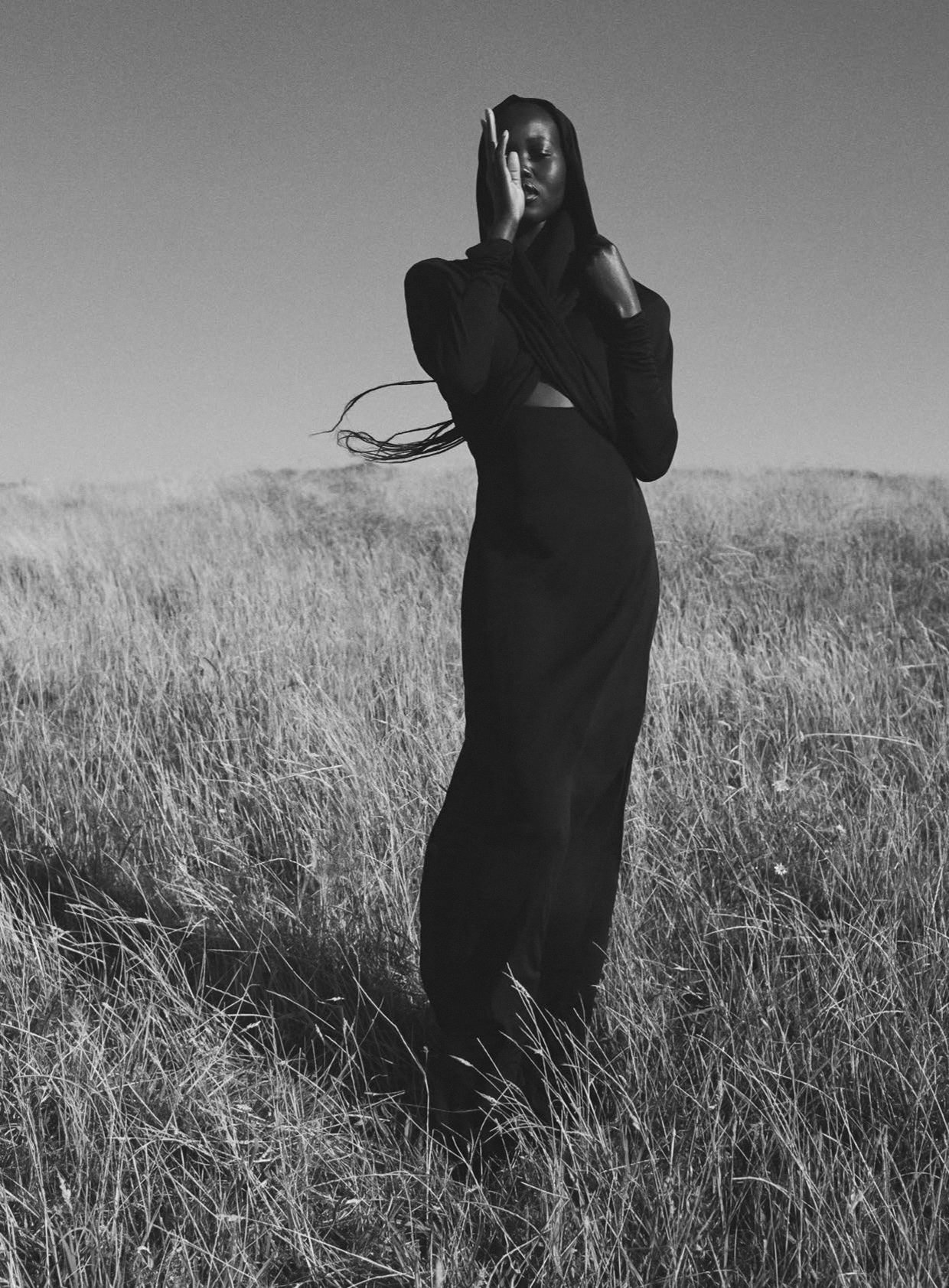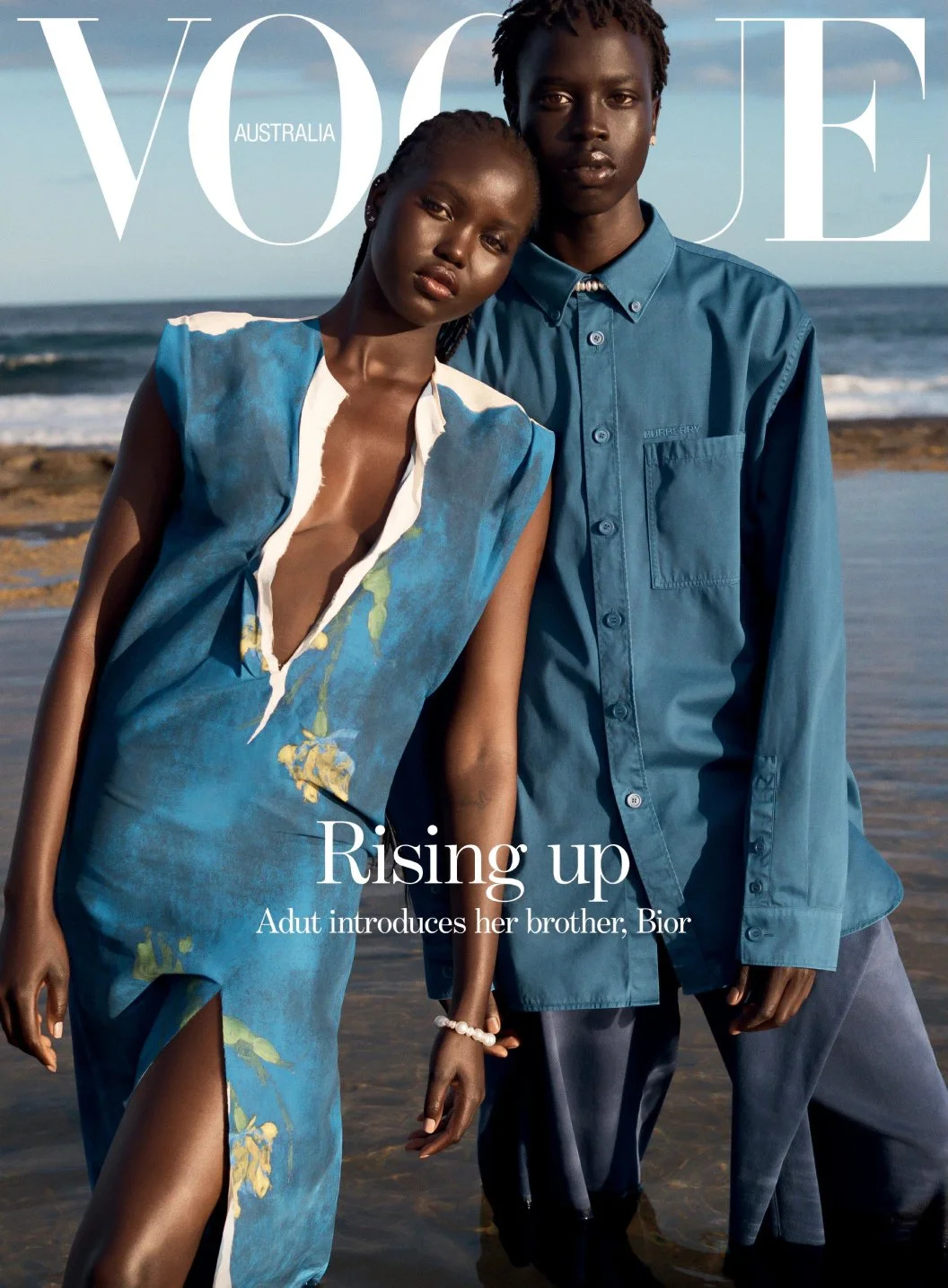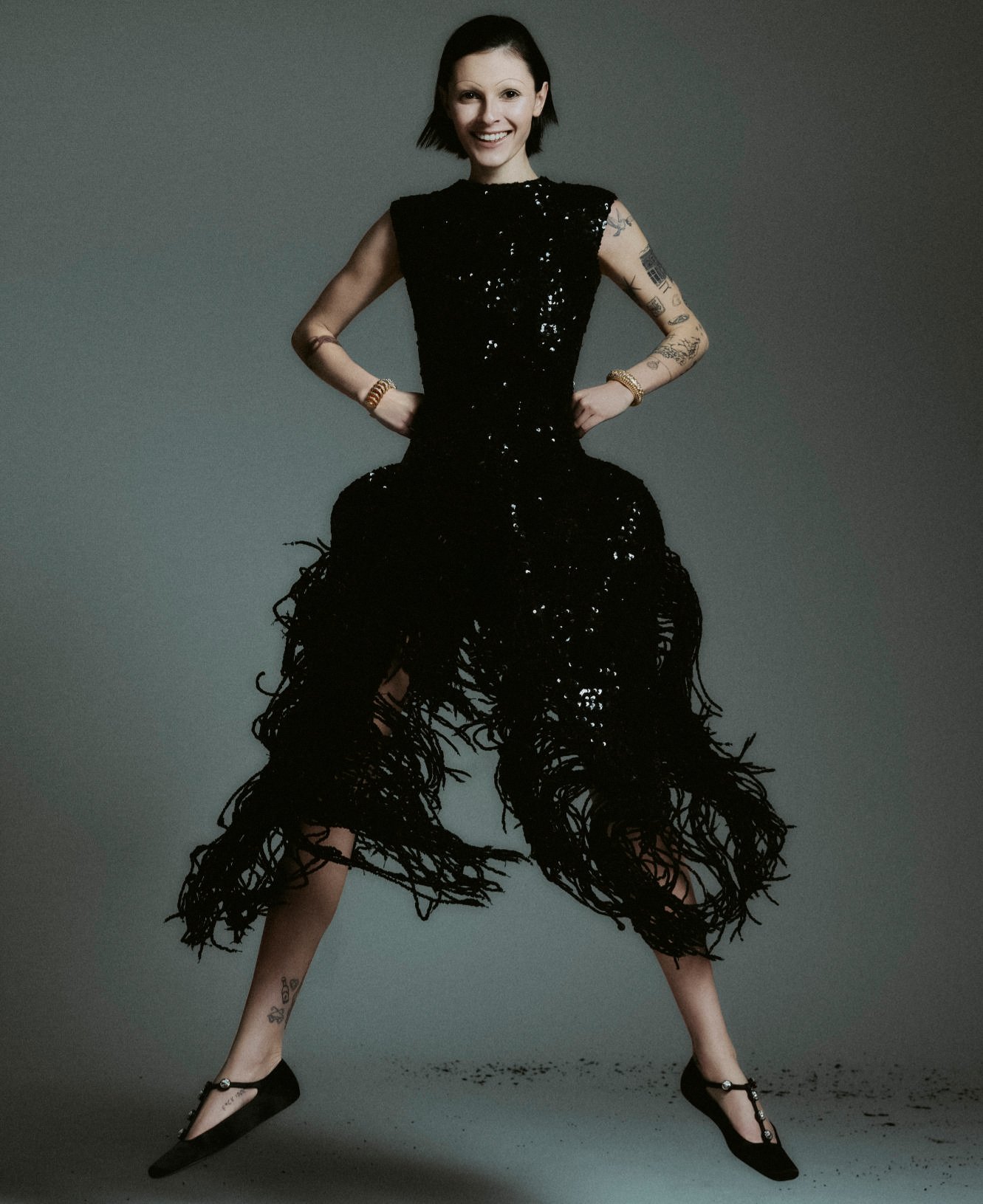Adut and Bior Akech Are 'Rising Up' in Josh Olins Vogue Australia April 2023 Cover Story
/Models Adut Akech and her only brother Bior Akech cover the April 2023 issue of Vogue Australia. EIC Christine Centenera styles the siblings in ‘Rising Up’, a compendium of summer luxury looks germaine to Australia but also to the ‘origins’ story that defines Adut’s and Bior’s South Sudan ancestry.
Photographer Josh Olins [IG] is behind the lens, on location at Dovecote, New South Wales./ Hair by Sophie Roberts; makeup by Kellie Stratton
Alice Birrell conducts the interview ‘Two of us: Adut Akech leads her brother, Bior, to the lens.’
AOC has written about Adut’s family and background for years. Call us an early adopter of the stories of the refugee models from the region, because of AOC’s fearless work on behalf of women’s rights in Sudan — before and after the split of Sudan and South Sudan on July 9, 2011.
Specifically with this early post of the covers, AOC narrated again last week the majority of content covered in the Vogue Australia interview. Adut Akech Shares Brother Bior Akech in 'Rising Up' by Josh Olins for Vogue Australia April 2023 AOC Daily
At a moment in fashion time when no one knows anymore what a supermodel is — and dear Edward Enninful is now declaring who is a supermodel — there is total agreement that Adut’s “papa” can call her a supermodel every day of the week.
In last week’s post, we explain our criteria — and especially Adut’s Estee Lauder contract — that give her supermodel bonafides from our pov.
The issue of ‘supermodels’ pales in comparison to new research out of Harvard — six days old — about Adut and Bior’s ancient heritage roots as part of what we now call the East African community. I want to summarize a wonderfully-shocking, brand new release of complicated DNA information about the Swahili civilization on the coast of East Africa in the year 1000 AD or 1000 CE.
My personal interest in East Africa — and South Sudan in its proximity to Ethiopia’s Omo Valley— is deeply rooted in humanity’s creation story and our collective exit out of Africa, into the entire Mediterranean region known as the Levant.
This story — tens of thousands of years old and getting longer every year — has been largely narrated and defined by white male colonial powers, global adventurers and slave traders. The men who wrote our history were initially funded by Pope Nicolas V and the Portuguese.
A February 2023 article in ‘America Magazine’ [hardly a supporter of women like me] tackles the role of the Catholic Church as slavetraders. I haven’t read it fully, but then I don’t censor our reading.
The article ‘Slavery and the Catholic Church: It’s Time to Correct the Historical Record’ is not one of denial, written by a MAGA stooge of Florida governor Ron DeSantis. Make no mistake, though, the MAGA crowd wants to bury all this new research and NEVER teach it in American schools.
The focus of the new research is the Swahili coast of modern-day Kenya — and what we regard as the ancestral exit point out of Africa into the larger world.
For perspective, Adut and Bior’s Sudanese roots are not near the coast, and the new Harvard DNA research is from the Swahili-speaking coast of the Indian Ocean.
At the northern edge of the map, you see Juba, South Sudan. Adut was born on December 25, 1999, a few days prior to her family’s Kakuma arrival as they escaped the violence in Juba. The road that Adut and her family traveled walking out of South Sudan towards Kakuma, Kenya seven years prior was about 235 miles.
Adut was age seven and in the room when Bior was born in the Kakuma Refugee Camp in Turkana County, Kenya. When Adut and Bior left Kakuma for Australia, I assume the family flew out of Nairobi. Until the plane was airborne, the scale of their world was about 800 miles from South Sudan to Nairobi.
On the map, you see Mombasa on the Eastern coast of Kenya, south of Nairobi, which is where Adut’s second “mama” Naomi Campbell has a beautiful home.
The Harvard research is focused on the coastal area, because of the trading relationships across the Indian Ocean. In examining the Swahili civilization, I note that Adut’s sister did speak Swahili, which is now the official language of East African nations. English is also widely spoken in the region.
The early conclusions of the DNA research contradict many beliefs about East Africa as narrated by British colonial powers.
1) “The study revealed that around 1000 CE, a stream of migrants from Southwest Asia intermingled with African people at multiple locations along the Swahili coast, contributing close to half of the ancestry of the analyzed ancient individuals.”
2) Africa’s Swahili people experienced cultural mixing from other people’s in the vast expanse of Africa and the Indian Ocean world — negating the prevailing view that foreigners contributed little to Swahili culture.
3) Initial waves of newcomers were mainly from Persia. These findings align with the oldest Swahili oral stories, which tell of Persian (Shirazi) merchants or princes arriving on the Swahili shores.
4) The bedrock of Swahili culture remained unchanged, instead meshing with the newcomers, even as Islam became a dominant regional religion.
5) Matrilocal marriage residence and matriarchal kinship remained African and Bantu in nature. The research negates the assumption that the male Persians forcibly married female Africans in the region.
Many of us believe fervently that women had much more power and influence in the ancient world. I speak of that reality continuously. The new research posits a much more plausible history, in which the African women had power and influence in the tradition of matriarchal Swahili societies. They created successful, often powerful marital alliances of a trading and business nature.
"Persian men allied with and married into local trading families and adopted local customs to enable them to be more successful traders,” according to the new research.
The authors say their hypothesis is supported by the fact that the children of Persian fathers and Swahili-coast mothers passed down the language of their mothers and that the region's matriarchal traditions did not change even after locals settled down with people from traditionally patriarchal regions in Persia and Arabia and practiced the Islamic religion of their male ancestors.
I understand that my own exhilaration over this new research is probably unmatched by many readers. Let me say that being “woke” to me is being informed — of knowing the ulterior motives of people in power not wanting to let go of it. This single piece of research has enormous impact on all women’s stories.
The research is especially empowering for women of color in Africa but also India. There’s an entire section in the research about Indian women who arrived in East Africa.
It should create an even greater sense of pride among people with African ancestry that together we are collectively taking sledgehammers to the prevailing history that we were all idiots in the rise of civilization, except for white men. Read Aristotle if you think I am exaggerating.
Yes, yes. Arabs were also slave traders, not only white men. Plenty of Arab and African men are and were misogynists. But they haven’t created humanity’s story, in the form of the rise of Western Civilization.
In a small way this intellectual diversion on Tuesday allows me to create a narrative around Adut and Bior that is vastly different than their refugee story — which is true. But we place it in a much larger narrative of historical facts.
Consider it a form of ‘ubuntu’ — “We are” . . . or “I am because of you.” ~ Anne

